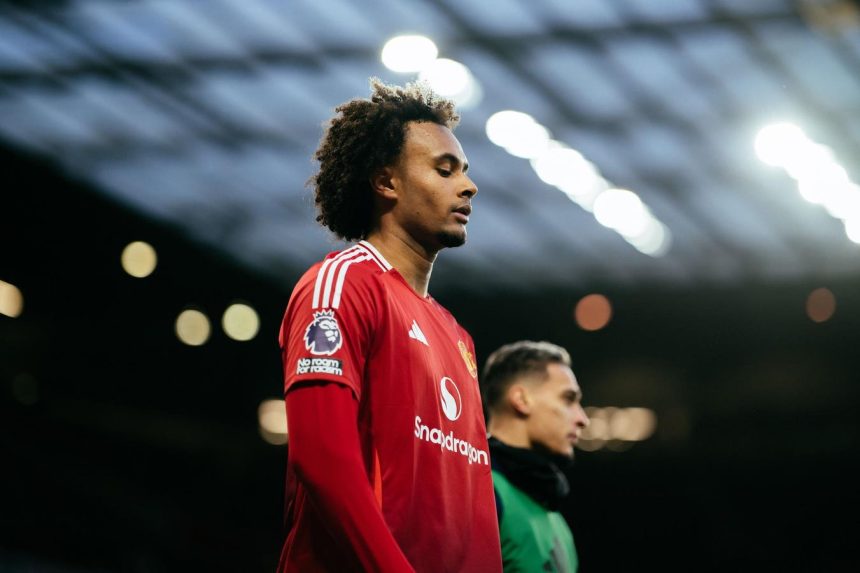Joshua Zirkzee’s arrival at Manchester United has been shrouded in tactical confusion. Purchased for €42.5m as an attacking reinforcement, the Dutch international has struggled to find his niche within the squad’s dynamic. Neither a traditional center forward, attacking midfielder, nor winger, Zirkzee’s profile aligns most closely with that of a secondary forward, a role currently undefined and unoccupied within Manchester United’s tactical framework. This ambiguity has left both previous manager Erik ten Hag and current manager Ruben Amorim grappling with how best to utilize his unique skill set.
While Zirkzee has been deployed as a center forward on occasion, his performances have highlighted a lack of essential qualities for the position. He lacks the hold-up play necessary to retain possession and bring teammates into the attack, a crucial element for a lone striker. Furthermore, his movement off the ball and positioning within the final third haven’t mirrored the instinctive sharpness exhibited by elite strikers. Rasmus Hojlund, with his more traditional center forward attributes, appears to be a more natural fit for the role, further complicating Zirkzee’s prospects of securing a starting position.
An alternative deployment could see Zirkzee operating behind Hojlund in a more withdrawn attacking role. However, this position has been primarily occupied by Bruno Fernandes, Amad Diallo, and previously, Mason Mount. While Mount’s recent injury in the Manchester Derby might theoretically open a window of opportunity for Zirkzee, he faces stiff competition and must convince Amorim of his suitability. The manager’s apparent frustration with Zirkzee’s performances suggests a significant uphill battle for the Dutchman to establish himself as a key contributor.
Adding to the uncertainty surrounding his future at Old Trafford, rumors of renewed interest from other clubs are circulating. AC Milan, who reportedly pursued Zirkzee during the summer transfer window before losing out to Manchester United, are believed to be considering another attempt to acquire him. Juventus has also been linked with a potential move, further fueling speculation that United might be willing to cut their losses after just half a season. Zirkzee’s failure to solidify a place in the squad, coupled with external interest, suggests a potential departure in the near future.
Despite his struggles to integrate into Manchester United’s system, Zirkzee undeniably possesses talent. His exceptional dribbling skills and three Premier League goals this season offer glimpses of his potential. At his best, he embodies the attributes of a secondary forward, reminiscent of Thomas Muller, a player renowned for his intelligent movement and ability to exploit spaces between the lines. Zirkzee shares many of Muller’s qualities, including an astute understanding of the game and a knack for creating scoring opportunities.
However, Amorim’s assessment of the squad he inherited, coupled with his demanding tactical approach, appears to present a significant hurdle for Zirkzee. Amorim’s high-energy, high-risk style necessitates players with an inherent intensity and work rate, attributes Zirkzee has yet to consistently demonstrate. This stylistic mismatch, combined with the existing competition for attacking positions, raises doubts about Zirkzee’s long-term prospects at Manchester United. As Amorim reshapes the team to his vision, Zirkzee risks being left out of the rebuilding process, potentially leading to an early exit from Old Trafford.



